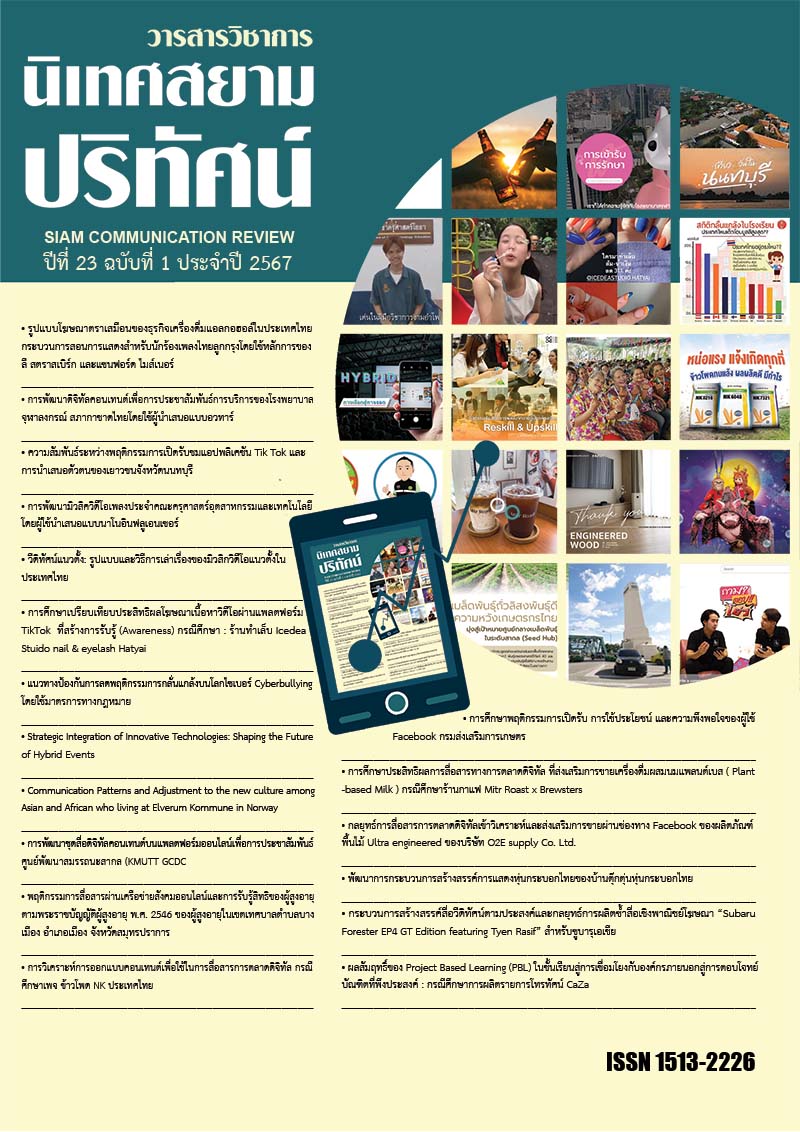Communication Patterns and Adjustment to the new culture among Asian and African who living at Elverum Kommune in Norway
Main Article Content
Abstract
The aim of this study was to study the differences in communication patterns in Norwegian and the adaptation to a new culture among Asians and Africans who living in the Elvarum community in Norway. The target group for this study was 400 foreigners from different cultures, including 200 Asians and 200 Africans. Using a questionnaire as a tool to collect data. The various theoretical concepts which are applied in the study included : how to learn the Norwegian language, culture shock, cross-cultural communication and the state of entering a new culture that shows the situations the target group encountered and how they adapted to the new Norwegian cultural environment.
The results of the study concluded that most of the 2 sample groups faced the situation of entering to a new culture. But for English communication and international communication, it was found that Most Africans were more knowledgeable than Asians. About adapting to a new culture, it was found that most Asians married local people. Then as a result to the lifestyles of Asians, are closer to and more benefit from local people than Africans. However, both groups of the study need to learn more Norwegian, in order to be better in Norwegian language while communicate with people living in this country.
Article Details

This work is licensed under a Creative Commons Attribution-NonCommercial-NoDerivatives 4.0 International License.
References
Adler, P. S. (1975) The transitional experience : an alternative view of culture shock Journal of Humanistic Psychology 15, 13-23.
Businessmate.org. (2009) What are Geert Hofstede´s 5 cultural dimensions?. Retrieved from. http://www.businessmate.org/Article.php?ArtikelId=4
Cortazzi, M. & Jin, L. (1997) Learning across cultures In D. McNamara & R. Harris (Eds.), Overseas students in higher education (pp. 76-90). London: Routledge.
Festinger, L. (1957) A theory of cognitive dissonance Stanford, CA : Stanford University.
Furnham, A. & Bochner, S. (1986) Culture shock: Psychological reactions to unfamilar environments London and NewYork: Methuen.
Gao, G & Ting-Toomey, S. (1998) Communicating effectively with the Chinese Thousand Oaks, California: Sage Publications.
Harris, J. G., Jr. (1975) Identification of cross-cultural talent : The empirical approach of the Peace Corps Topics in Cultural Learning, 3, 66-78.
Hofstede, G. (1993) Cultural constraints in management theories Academy of Management Executive, 7(1), 81-93.
Lysgaard, S. (1955) Adjustment in a foreign society: Norwegian Fulbright
Grantees Visiting The Unitad State International Social Science Bulletin, 7, 45-51.
McFalls, E. L., & Cobb-Roberts, D. (2001) Reducing resistance to diversity through cognitive dissonance instruction implications for teacher education Journal of Teacher Education, 52(2), 164-172.
Oberg, K. (1960) Culture shock adjustment to new cultural environments Practical Anthropology, 7, 177-182.
O`Donoghue, T. (1996) Malaysian Chinese Students`Perceptions of What Is
Necessary for Their Academic Success in Australia : A Case Study at One University. Journal of Furthur and Higher Education, 20 (2), 67-80.


